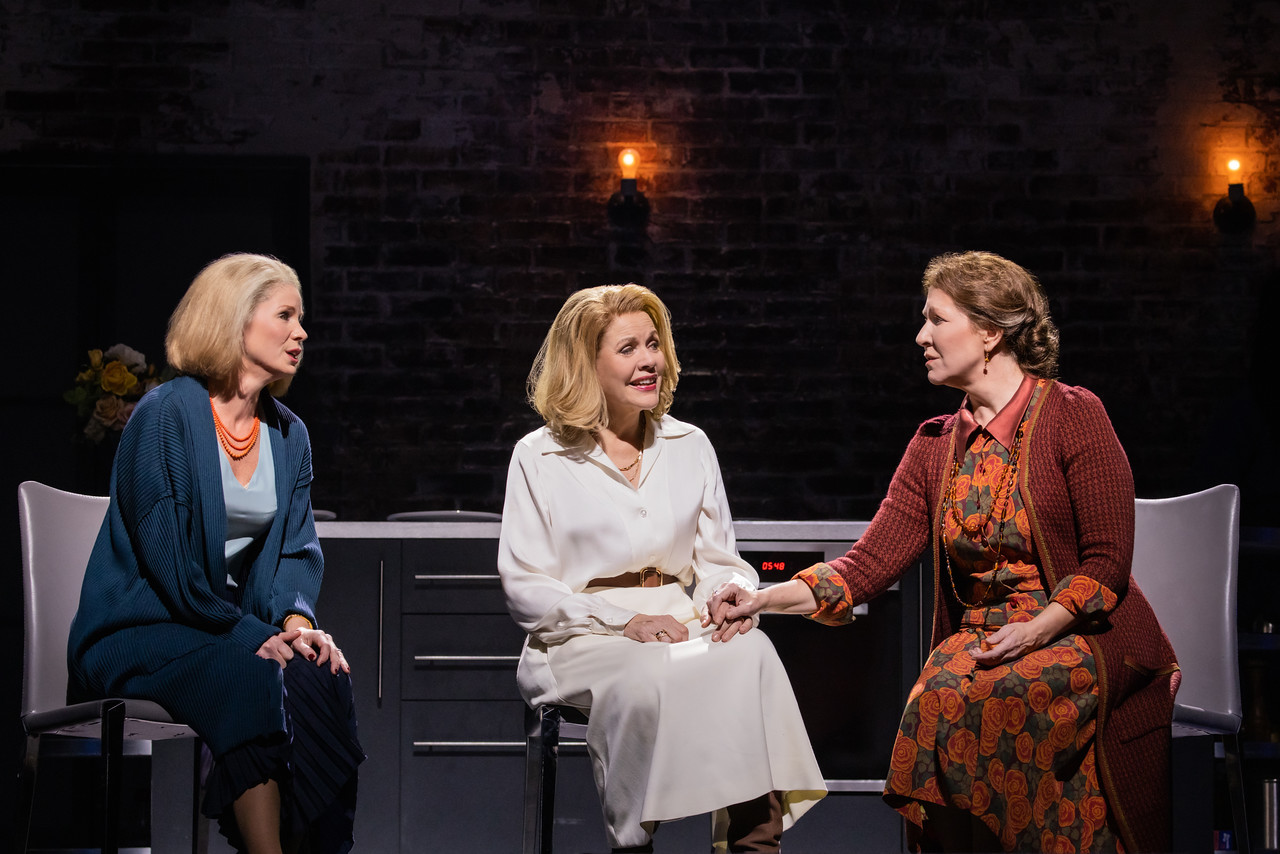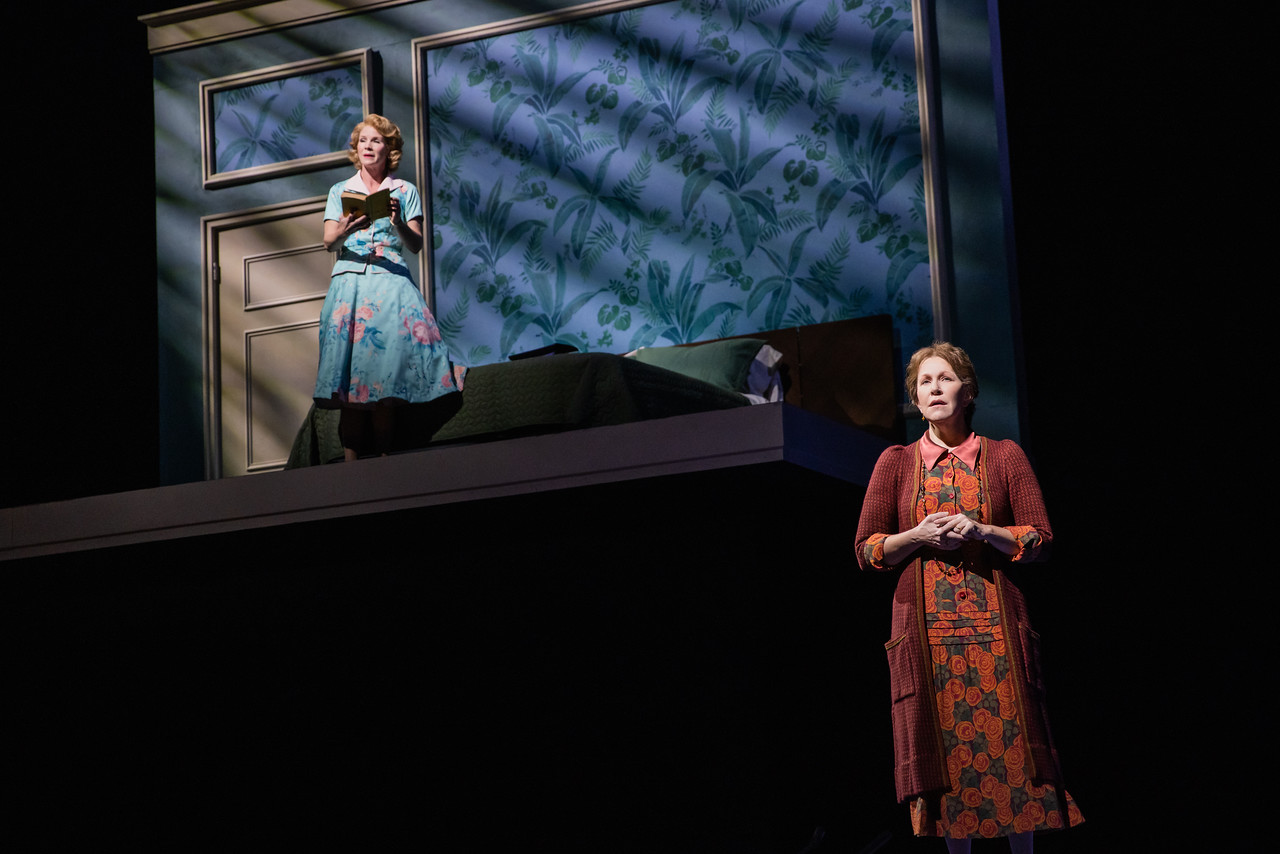Reviews
The Hours: Contemporary Music Theater at Its Best
When Renée Fleming bid a fond farewell to the Met Opera in 2017, singing her final Marschallin in Rosenkavalier, she did say that she might return one day should the right project come along. That it has, in the form of The Hours, Kevin Puts and Greg Pierce’s new opera, based on Michael Cunningham’s 1998 Pulitzer Prize-winning novel and the subsequent, 2002, film of the same name, starring Meryl Streep, Julianne Moore, and Nicole Kidman. Matching one artform’s diva for another’s, the opera stars Fleming, Kelli O’Hara, and Joyce Di Donato. They are, respectively Clarissa Vaughan, Laura Brown, and Virginia Woolf: Three women living in three different eras, connected by Woolf’s 1925 novel, Mrs. Dalloway. Each is struggling with her own inner demons, teetering at the edge of societal norms; two are depressed bordering on suicidal, the third living in fear of her best friend Richard’s death from AIDS. Their stories unfold simultaneously, in one day.
So they do in the opera, in three hours, a challenge of a construct met head-on in Phelim McDermott’s staging, which opened November 22. Using the book as his base, and in some cases quoting directly from it, Pierce fuses the three portraits: Woolf in the 1923 English countryside, writing Mrs. Dalloway; Laura in 1949 Los Angeles reading it, an escape from her unhappy marriage; and Clarissa, named for its heroine (Clarissa Dalloway), an editor in late-20th-century Manhattan, preparing for a party in Richard’s honor.
 Kelli O'Hara, Renée Fleming, Joyce DiDonato are Laura, Clarissa, and Virgina in Kevin Puts's The Hours
Kelli O'Hara, Renée Fleming, Joyce DiDonato are Laura, Clarissa, and Virgina in Kevin Puts's The Hours
Puts assigns each her own musical language, reflective of their eras and embedded in a rich weave of time and place, from early- to mid- to late-20th century, from full blown swells of harmonic orchestral Romanticism to chugging minimalism to a lone flute line above a plucked harp. Along the way there are cheeky quotations, such as Mozart’s Queen of the Night vocalese in a Manhattan floral shop or 1950s-sounding ad jingles in Laura’s 1950s Maxwell Housewife kitchen.
The idea for the opera came from Fleming (she credits her assistant); she and Puts had collaborated on a song cycle in the past and were eager to come up with another project. Puts, who won a Pulitzer Prize for his 2012 opera Silent Night, is not afraid of vocal lyricism, unlike some of his peers who compose range-jumping instrumental lines for singers to wrestle with. His language is certainly tonal, more consonant then dissonant, but not entirely and not always. The score here is tightly aligned with character mood and circumstance, from a dissonant explosion of brass and percussion for Virginia’s headache to hugely satisfying harmonic resolutions that bloom cinematically from the bottom up.
Puts has said that he has tailored the vocal lines to these three voices. Thus Fleming, now 63, spends a great deal of time in her “money note” range (too much--the opera is overlong), which she approaches comfortably; below it, and especially with full orchestra, she dips into inaudibility. Compared with O’Hara and especially DiDonato, she sounds somewhat fragile, though Puts attends painstakingly to musical context.
They are the right personalities for these roles—in her blonde page boy, O’Hara, a light-voiced Broadway star with opera cred, even looks like the perky 1950s movie star Sandra Dee. DiDonato inhabits her character with a frumpy no-nonsense intensity, singing with a generous, secure tone and flexibility across the range. Fleming can shine, but not evenly; as to attire, she spends much of her time in a white coat-dress with shoulder-strap pocket book, running errands, visiting Richard, standing on a street corner singing remembrances.
 There are 30 scenes, but they flow seamlessly one to the next, helped along by a core of eight dancers that move in, out, and around (and sometimes dangle from) Tom Pye’s sparse set pieces: Laura’s perky yellow linoleum 1950s kitchen; Virginia’s study, doubling as a dining room; Clarissa’s and Lewis’s living rooms; the face of a Manhattan brownstone or a sun-drenched beach, the latter projected on a billowy white curtain that drops suddenly from the flies (projections by Finn Ross); a flower shop; an anonymous hotel room, etc.
There are 30 scenes, but they flow seamlessly one to the next, helped along by a core of eight dancers that move in, out, and around (and sometimes dangle from) Tom Pye’s sparse set pieces: Laura’s perky yellow linoleum 1950s kitchen; Virginia’s study, doubling as a dining room; Clarissa’s and Lewis’s living rooms; the face of a Manhattan brownstone or a sun-drenched beach, the latter projected on a billowy white curtain that drops suddenly from the flies (projections by Finn Ross); a flower shop; an anonymous hotel room, etc.
Under conductor Yannick Nézet Séguin, music director of the Met and the Philadelphia Orchestra, where the score premiered last spring, the supporting cast is solid, especially the chorus, offering judgmental man-on-the-street commentary in one scene, giving voice to the women’s interior tormentors in another. Annie-B Parson's choreography offers fluid connective tissue of libretto themes.
As Richard, Kyle Ketelsen burnished Puts’s lyrical lines with his rich bass-baritone, a sad but cynical figure seeking his end; the blend of the treble trio of angels haunting him, doubling as Virginia’s niece and two nephews, was pure to a fault; as the mysterious Man Under the Arch, John Holiday’s countertenor was an occasional, savory highlight. (He is also the hotel clerk for Laura’s brief attempt at escape.) As Clarissa’s partner Sally, Denyce Graves’s contralto blended richly, while Kathleen Kim easily nailed the florist Barbara’s Queen of the Night stratospheric pipings. Tenor Sean Panikkar wobbled as Leonard Woolf, a match for his wife neither in character nor voice. There were a number of Lindemann Young Artists grads in the cast,, including Brandon Cedel as Laura’s dorky husband Dan, Tony Stevenson as Walter; and Sylvia D’Eramo as Virginia’s sister Vanessa, doubling as Laura’s uptight neighbor Kitty, whom Laura at one point kisses squarely on the lips, thus bringing up yet another of the book’s themes—sexual ambiguity.
As always, the Met Orchestra acquitted itself brilliantly, as Puts’s theatrically potent, pungent score clearly deserves.
Above: Laura reads Virginia's novel as Virginia ponders its protagonist's thoughts
Photos by Evan Zimmerman / Met Opera

WHO'S BLOGGING

Law and Disorder by GG Arts Law
Career Advice by Legendary Manager Edna Landau
An American in Paris by Frank Cadenhead





 FEATURED JOBS
FEATURED JOBS

 RENT A PHOTO
RENT A PHOTO


